Building a three-player chess website
Context
Around the end of 2019, as we were going through our few last months of engineering school, we ended up having a quite consequent amount of free time due to the highly irregular organisation of courses throughout the year.
Daniel, a friend of mine from school who has been a huge fan of chess for a while now told us one night about how he read about this chess variant with three players and how he thought it would be interesting to build a game engine for it.
Since I had time to waste spend building something funny meaningful,
I was interested in getting involved in this project to make it grow and be
something more than only a game engine (which I thought nobody would use
anyway, since playing chess through command line on a single computer does not
seem that appealing).
That’s how, Daniel, Vincent (another friend from school with whom I had worked on many side projects), and I decided that we were going to build a website so that people could come and play chess with two of their friends.
What is three-player chess?
Some might wonder what really is 3-player chess, do the rules change when introducing a third player, and if they do, how?
Even though 3-player chess seems like a simple and precise concept, there are many variations with light differences and not one set of rules for 3-player chess. These different variations come in variants with different names (Trichess, Chess for three, Three-Player Chess, Yalta chess…) but not every mention of one variant describes the same rules and there is a huge lack of norm here.
The variation of chess played on yalta-chess.com can be considered as a unique variant, but mostly inspired by Yalta Chess (not much suspense here) from which we tried to follow the rules as much as possible, but once again, the rules differed depending on the articles.
On our website, you’ll play on a 96-cell board (32 for each player, just like usual chess).
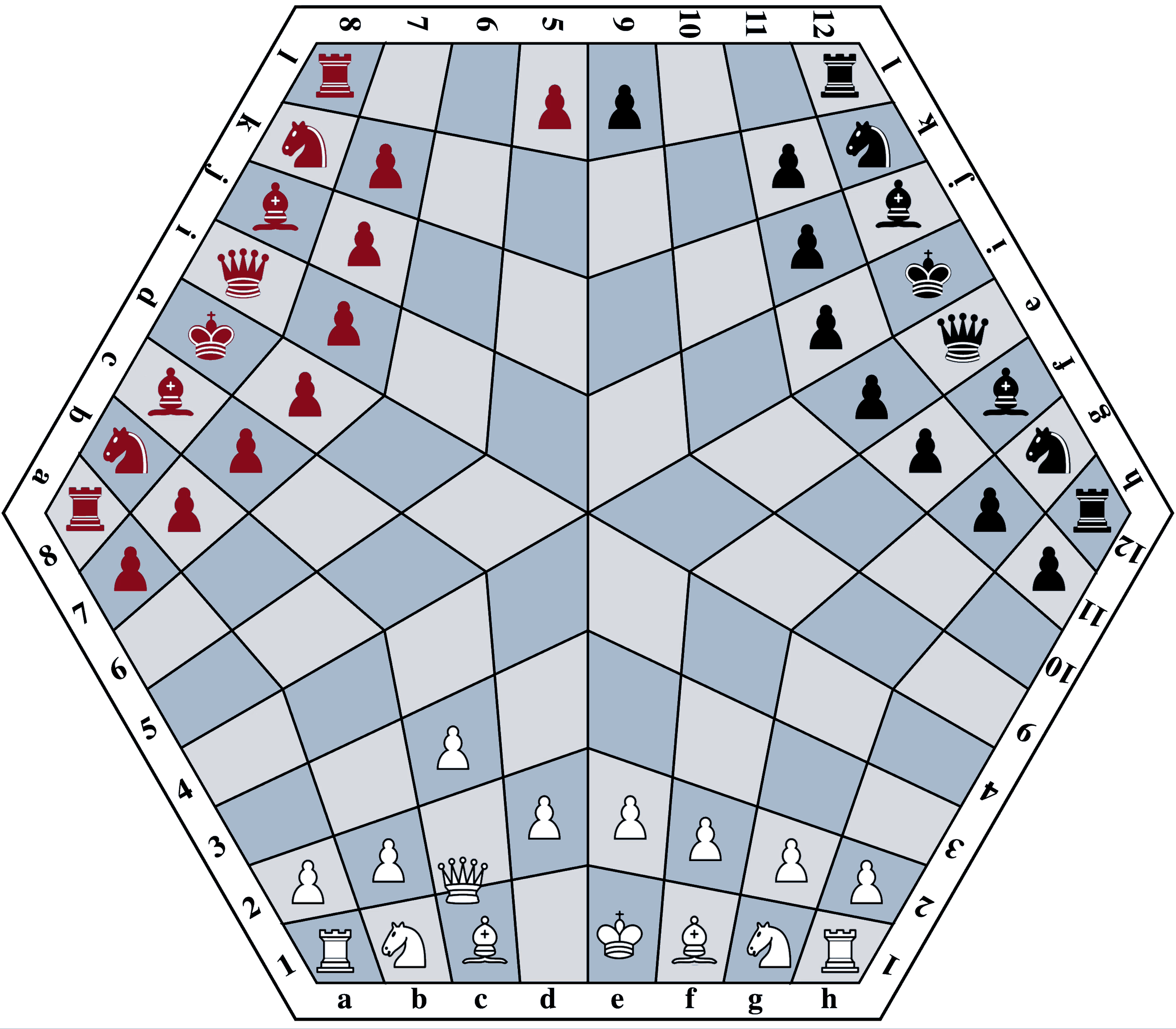
The moves are the same as classic chess, but it can take some time to get used to the moves around the center or the board when starting to play Yalta Chess. The only real difference with 2-player chess is how winners and losers are handled.
The winner is the first player to checkmate another player, meaning that there are one winner and two losers. This makes the game more interesting, rewarding aggressive strategies since playing too defensive might end up in a loss where one of the other players checkmated the third player.
Early development
Our initial goal was pretty simple and seemed easy to accomplish, the tasks which needed to be done could have been summed up as:
- Building a game engine, implementing every rule and move.
- Having a game page on which 3 players could play together with a decent user experience.
- Having a basic matchmaking system, so that players could join games easily.
It looked easy and fast, the game engine was the main challenge since the special shape of the board made the classic 2-player chess implementation unsuitable for our needs and we needed to come up with a smart way to handle the board. Once the game engine was out of the way, the only remaining thing would be to build a simple website with basic functionalities.
Two of us already had some web development knowledge which we acquired through previous side-projects, I would not say that we were amazing (or good) web developers, but we were at least decent. Well, for the backend at least, our UI/UX level was (and still is, but those who saw the website already know that) pretty bad.
Since we weren’t looking for high performances in our game engine because a few milliseconds were not going to impact the user experience, building the engine was actually pretty fast. One of us focused on it, and after a few days we had a game engine implementing the rules and about everything we needed except promotions, castling, and en passant which came later.
Our implementation relied on the fact that instead of using one 8x8 board as in 2-player
chess, we considered the board as 3 distinct 4x8 sub-boards, each sub-board filled with a
different color on the example below:
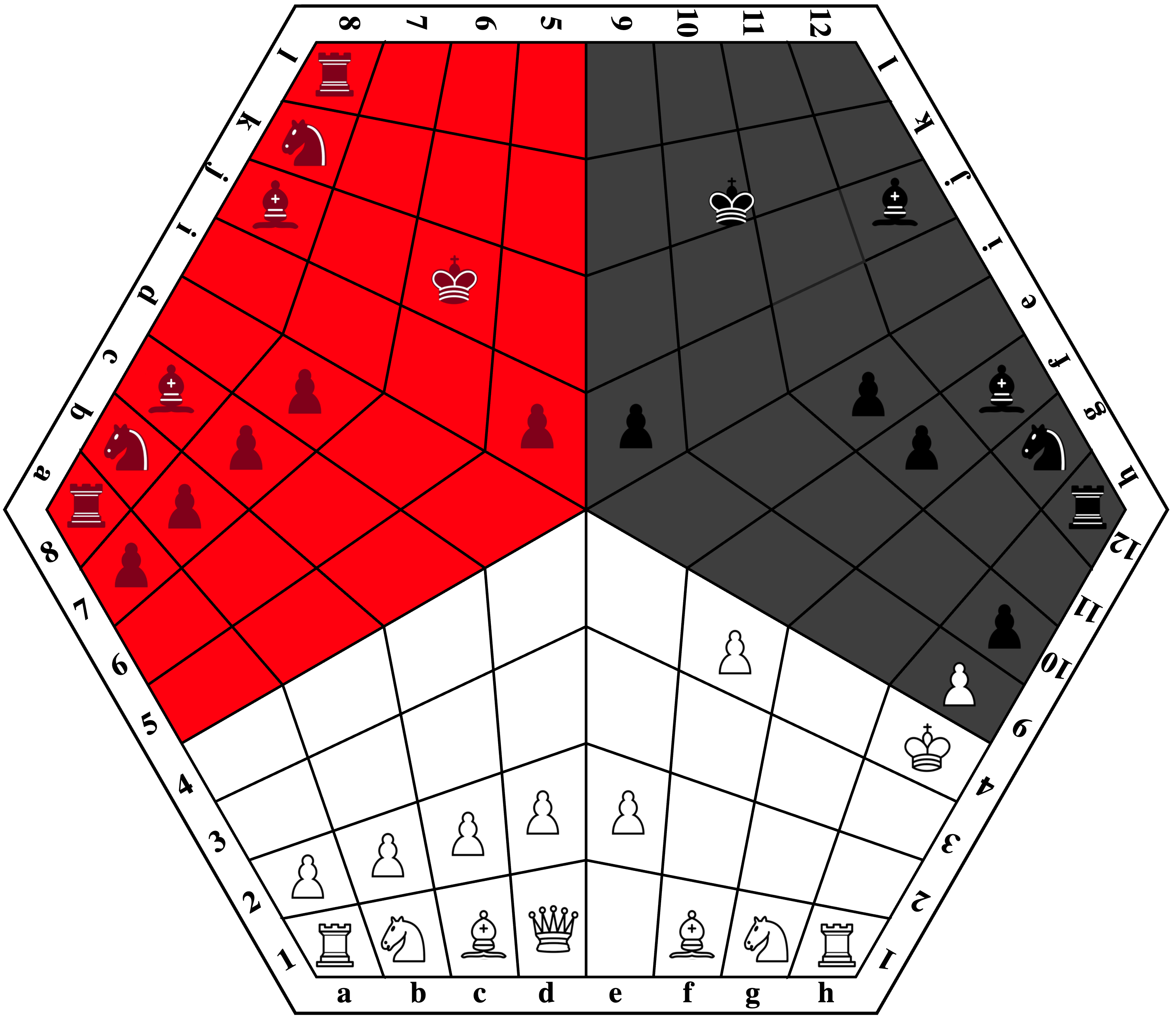
The website, on the other hand, was way more complicated than we anticipated, handling concurrent plays with real-time information transfer between the players (without refreshing after each move) and implementing a decent user experience was much more challenging than we expected.
Our first playable version looked like this:
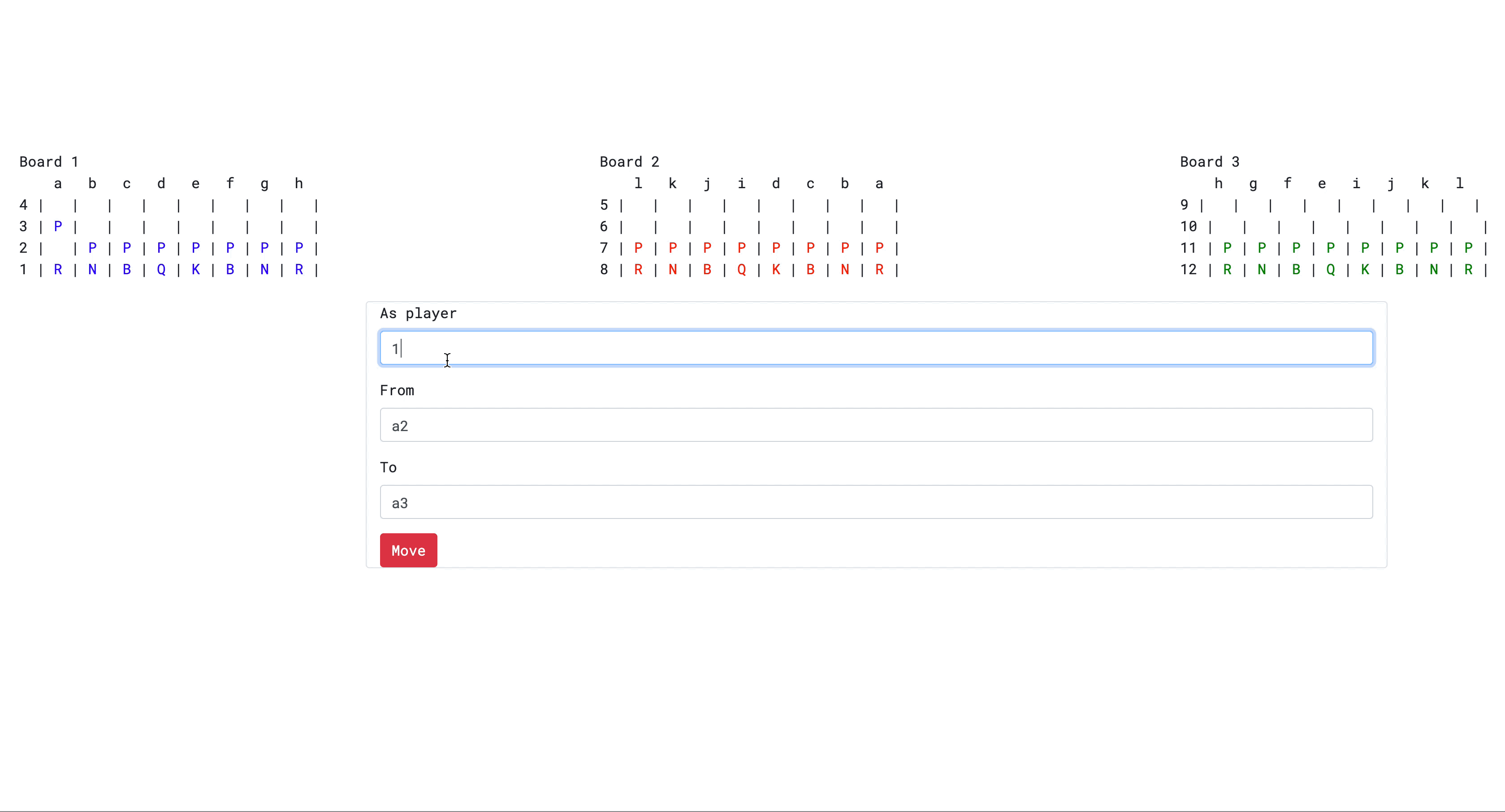
With the three boards representing the three sides of the board as explained above.
This first version allowed us to check that our engine worked as intended, but required us to refresh a page to see the other players’ moves and wasn’t very user friendly.
That’s when we really became aware that the website part of the project would require an amount of work strongly higher than the game engine implementation.
A basic project
The more we implemented new features on our website, the more features we thought about which seemed to be required to have a decent user experience on the website. Some of these features were not necessary but seemed like good ideas/interesting to implement so we implemented some of them and the others were listed and put aside for later.
After a few weeks, we had a decent result for the play part of the website; three players could play on the same page, moving by selecting a piece and moving it to its location and seeing the actions’ results in real-time.
Our first matchmaking system was fairly basic, there was a list of created games, and any player could join any game, if the user was the third player to join a game, it would start, and if there were 3 players already in the game, the user would be considered as a spectator. On top of that, any user could create a new game.
At this time we had already spent way more time on this project than we thought we were going to, even though we had only implemented the features we thought were necessary to have a good time playing the game. The website’s current state was enough to send the link to some friends and play games with them if we wanted to, the global design of the website wasn’t nice, but playing stayed pretty intuitive.
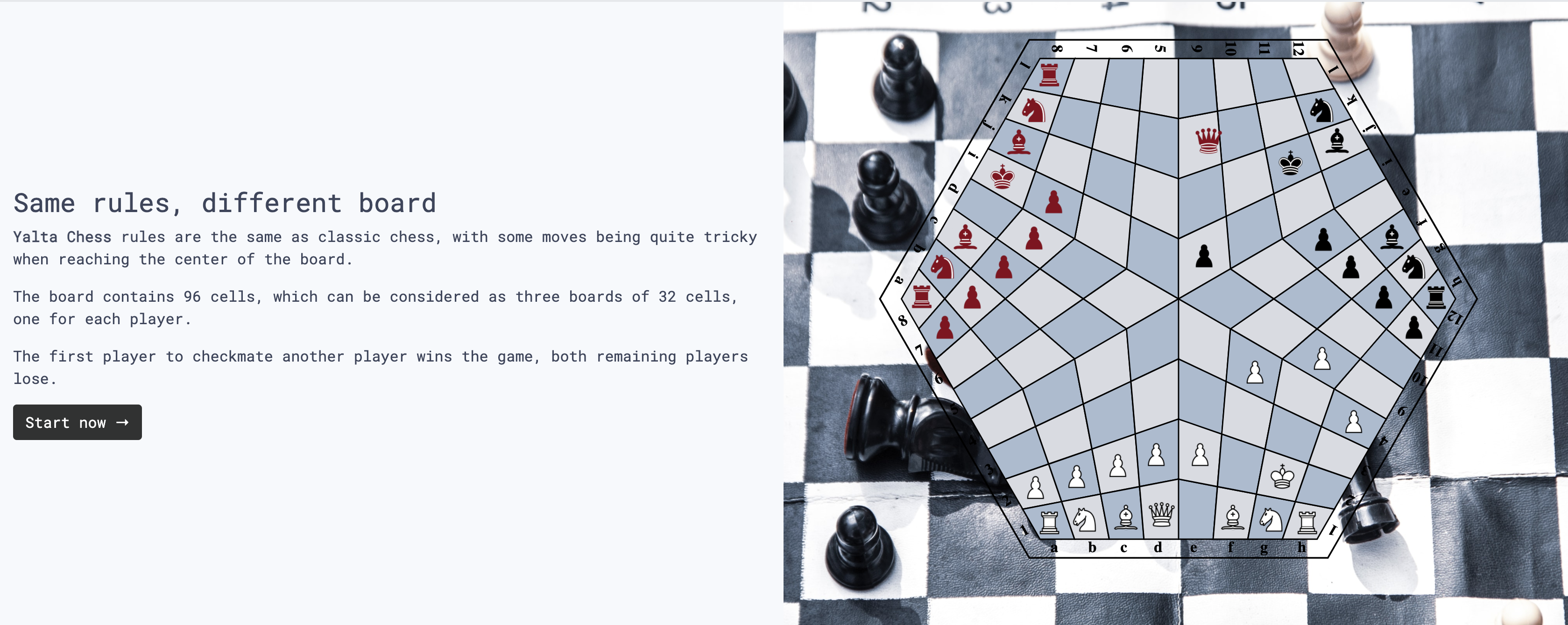
Not so basic anymore
When we started this project, we did not define the real scope of users who would use it, the more we worked on it and the more features we started implementing, the more we started to want to make it public so that everyone could come and play.
As we started having less free time due to school projects and then the real jobs we got after graduating, we spent way less time developing this project the following months but we kept working on it and added a lot of new sfeature. Some of those being necessary for a public release, some that we felt were a really nice addition for users and some which might just be really useless (Hello, in-game chat). Among these extra-features are:
- A custom game system to play with friends with custom settings
- A public queue system to play with random unknown players
- A training mode to play against bots in different difficulties
- A profile system with ranks, elo, skins, themes, and statistics
- Game timers
- A board rotation system, to see the board as one of your opponents
- An in-game chat
- The possibility to show replays of games
- A documentation section to explain the website and the game rules
- A landing page to explain to new users what happens here
- A new implementation of the game engine with improved performances and a graph system (replacing the 3x4x8 sub-boards implementation)
And of course, a landing page to welcome new players to our website. The old matchmaking system based on a game list was removed, since the public queue and private game system fully replaced the need for it.

Costs and revenues
As we added new features and new services which started to increase potential costs, we had to consider the business aspect of the website. We were not fully against trying to monetize it but we did not want this to impact the user experience, driving potential users away because of aggressive advertising or pay-to-win systems.
We considered ads, but generic ads (such as adsense) would require to have a huge amount of traffic to really generate money and they usually don’t fit well into a website. We did not want our website to get significantly less enjoyable for users just to win a few euros every month (or year).
We considered some other solutions than ads but in the end, we did not find an adequate business model. Not being able to generate revenue is not currently an issue, since the goal never was to quit our jobs and start working on this project every day of the week. Nevertheless, we did not anticipate when we started this project (before we decided to add many unexpected features) that there were gonna be real costs to run the website.
Indeed, the website now runs using many different services and tools which come with a cost, meaning that we cannot sustain with this business model (which is not one, since we generate no revenue) if our user count grows too much.
As long as our monthly costs stay under a few dozen of euros, it is fine, I’d say that we are happy to pay for it if some people are happy to play on yalta-chess.com. But if this website became too popular, we would have to scale up the different services we pay for (hosting, Redis, database…), resulting in hundreds of euros bills.
Hence, if too many people end up enjoying our website, at some point we will have to shut it down (or strongly restrict traffic) if we still cannot generate revenue.
This is really unlikely to happen since we don’t plan on doing real advertising for this project, and we are not so presumptuous as to think that this website is good enough to deserve this much success. But we still have to consider this scenario, and if it happens we will still try to consider ways to generate revenue, we are not fully closed to ads, but we feel like right now nothing fits our needs, maybe we’ll set up a donation system but those rarely work.
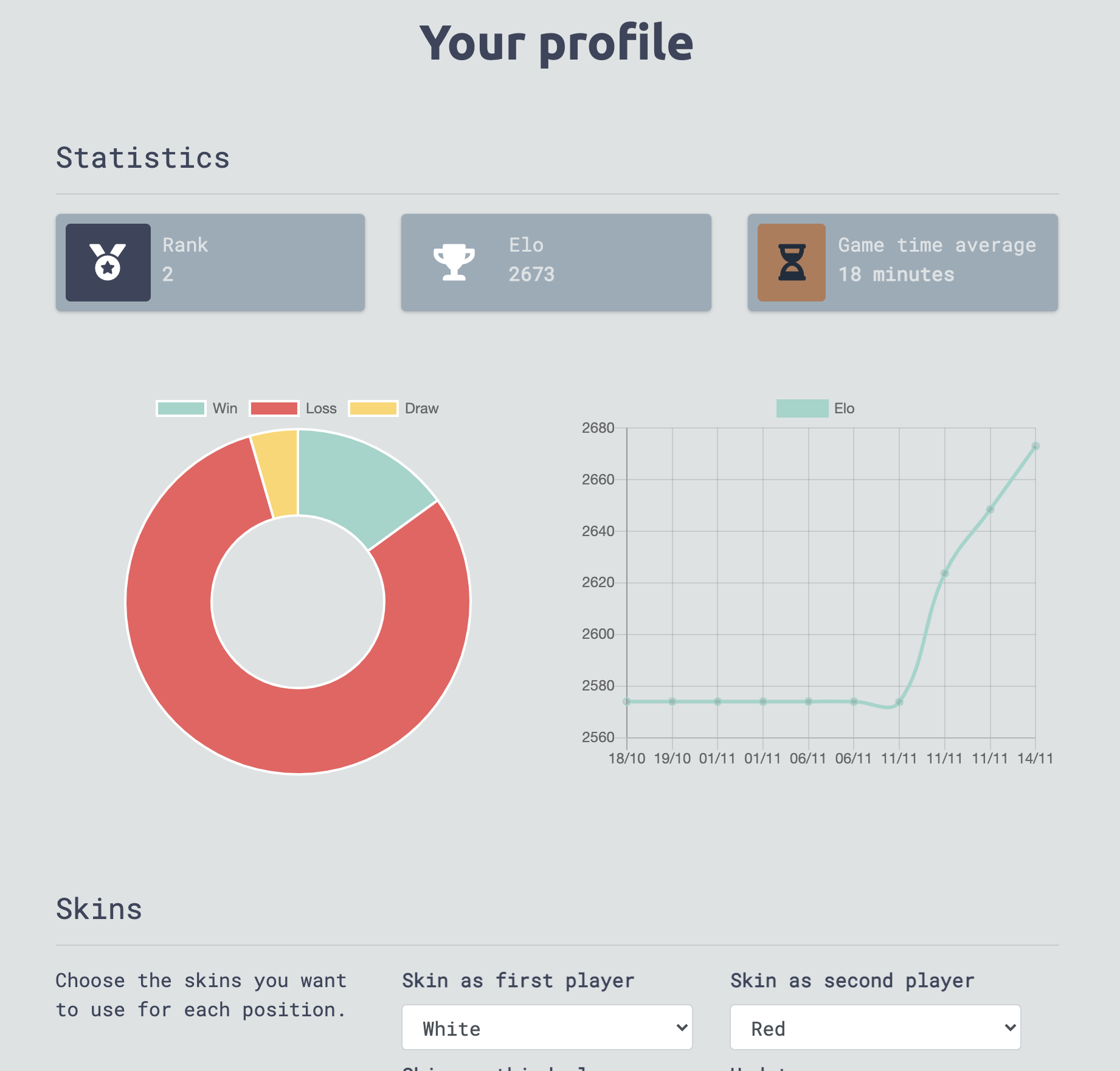
What’s next
We probably spent too much time on this website, way too much, but most features were implemented because we enjoyed it and not really because we felt like all of them were required.
We still have dozens of ideas about improvements that could be implemented for this project which could make me work on this project for a few extra months or years. But I thought it was time to wrap it up and prepare everything needed for a public release, putting all remaining ideas into an issue list with implementation ideas if a V2 came to be implemented one day.
This will make this project feel like a complete product (even though I know it’s not), allowing me to move on to other side-projects.
Come try the website at yalta-chess.com, if you don’t find any players in the public queue and you don’t have any friends to play private games with, head to the training section (Create a custom game => Training) and try playing against our bots with various difficulties.
A special thanks to Daniel and Vincent for working with me on some parts of the project and for their continuous reviews of the website’s progression.
If you want to get in touch about this project, feel free to contact me at smlep@yalta-chess.com.